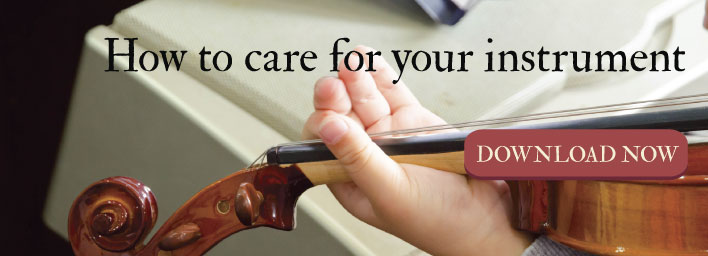How Does Cold Weather Affect Your Violin?

Does your violin sound a bit more nasal or tinny when you play it during the winter? Perhaps your instrument feels a bit tight, and you get more aggressive with it.
Both of these conditions happen in winter when the cold and dry air affect the wood. As you know, the sound of any string instrument is dependent on its physical construction. Anything that interferes with its physical integrity also interferes with its sound.
Why Winter is Rough on Violins
Cold air goes hand in hand with dry air (low humidity). Both are uncomfortable. That's why we all turn on the heat indoors during winter. We can tolerate extreme fluctuations in temperature and humidity.
Wood instruments do less well. That's because wood is generally either absorbing or releasing moisture into the air. If the air around the violin is dry, it sucks moisture out of the wood. If the air is humid, then the wood absorbs that moisture. Wood becomes misshapen when this cycle of absorbing and releasing moisture happens frequently – the more extreme the air and humidity fluctuations, the more significant the impact.
When a violin loses too much moisture, it will contract. The plates can shrink, putting pressure on the sound post. Or you may find that the bridge has shrunk. When it absorbs too much moisture, wood swells. This swelling can cause the plates to separate from the sides. If the violin is regularly experiencing large swings in its moisture level, cracking and warping can occur.
The key to avoiding winter damage to your violin is to keep it in a controlled environment as much as possible.
Controlling Your Violin's Environment
Violins are most comfortable in 60 to low 70 degrees and 45% to 55% relative humidity. The relative humidity is key because that tells us how much moisture the air is holding as a percentage of what it can hold.
If the relative humidity in the air is too low, it can take moisture out of the wood because there's room in the air for more moisture. If the relative humidity is too high, it can't hold much more moisture. In this case, the wood can start absorbing moisture from the air.
When you're moving back and forth from the car to the indoors, how do you control the violin's environment? Especially since you may not have much control over how warm the indoor temperature is either.
Your violin's most immediate and constant environment is its case. Something as simple as a gap in the zipper or clasp that won't completely shut can let air or moisture inside the case. Make sure your violin case closes tightly.
You also want to control the humidity within your violin case. Most humidity control products only work one way: releasing moisture into the air. What your violin needs is a balance. It needs the air to stay with the target relative humidity range of 45 to 55%. If the relative humidity of the air around it is higher than that, the last thing you need is for more moisture to get released inside your case.
The complete option is to use two-way humidity control. Boveda makes packets you put into your case that can both release and absorb moisture, depending on what's needed. A two-way humidity control product is the only way to keep the relative humidity of the air in your case in the right range.
Staying in control of your violin's environment is the reason why you never want to leave it in the car. Unless the weather outside is temperate, it will affect your violin. An airtight case and two-humidity control packet can help mitigate that impact. Even so, the better option is not to leave your instrument outside.
Taking care of your violin is as much a part of being a serious music student as is taking ownership of your practice schedule. It's not glamorous, but it's part of the discipline that helps you excel when you perform.
Sponsored by Thomastik-Infeld


